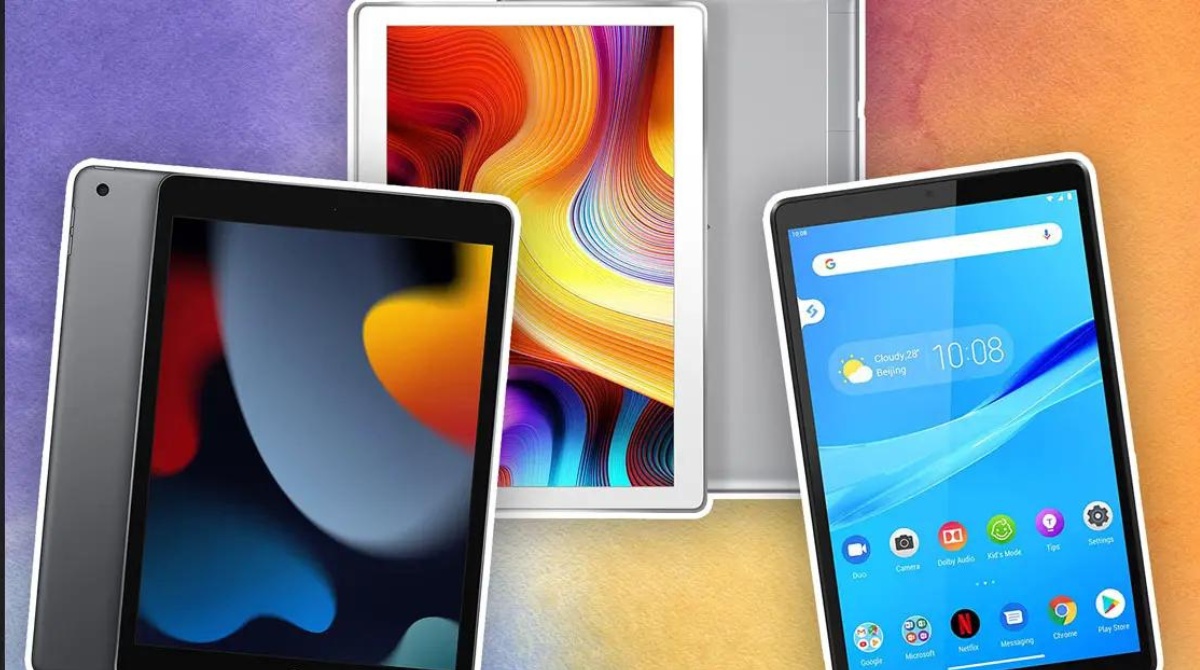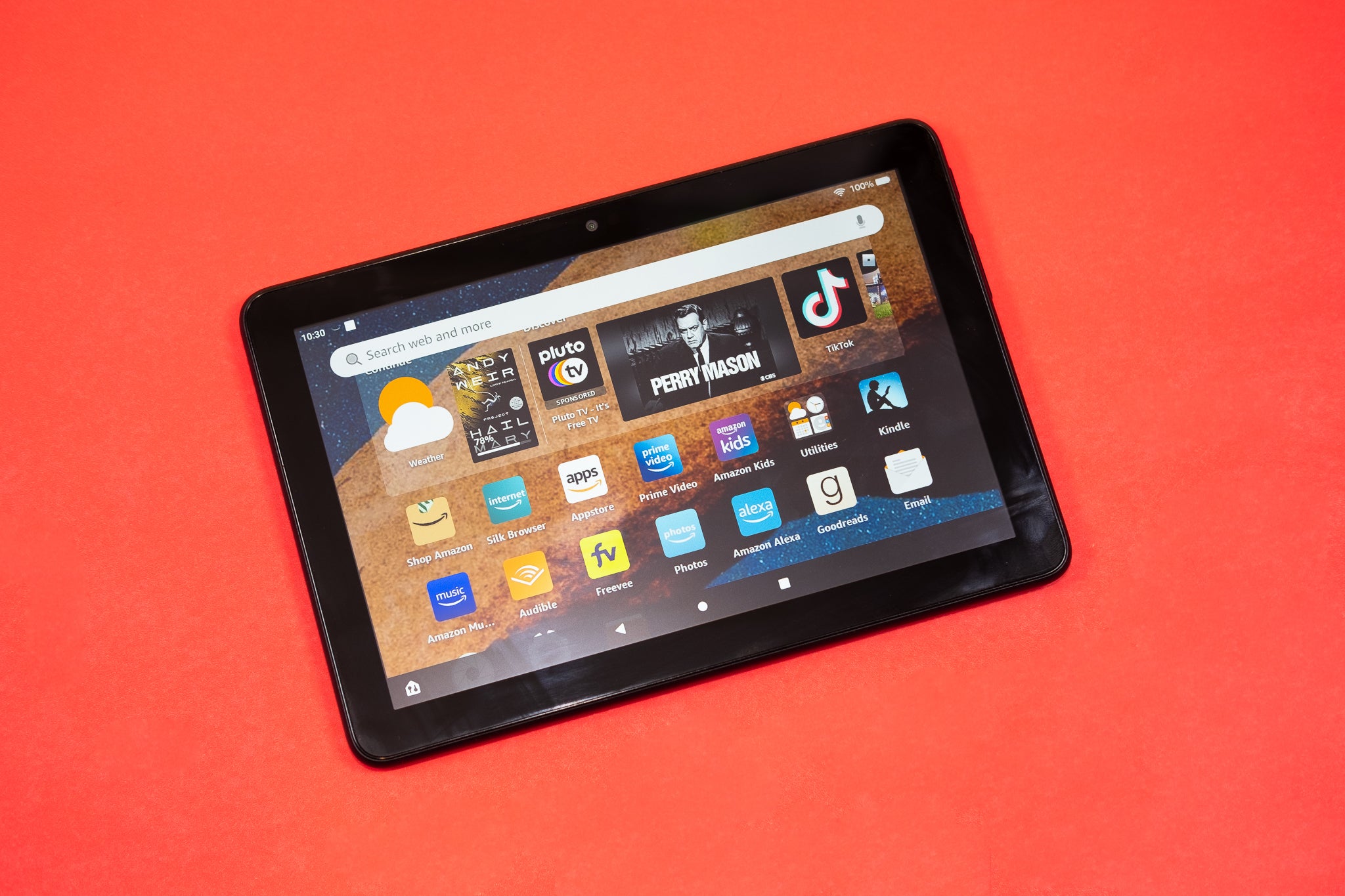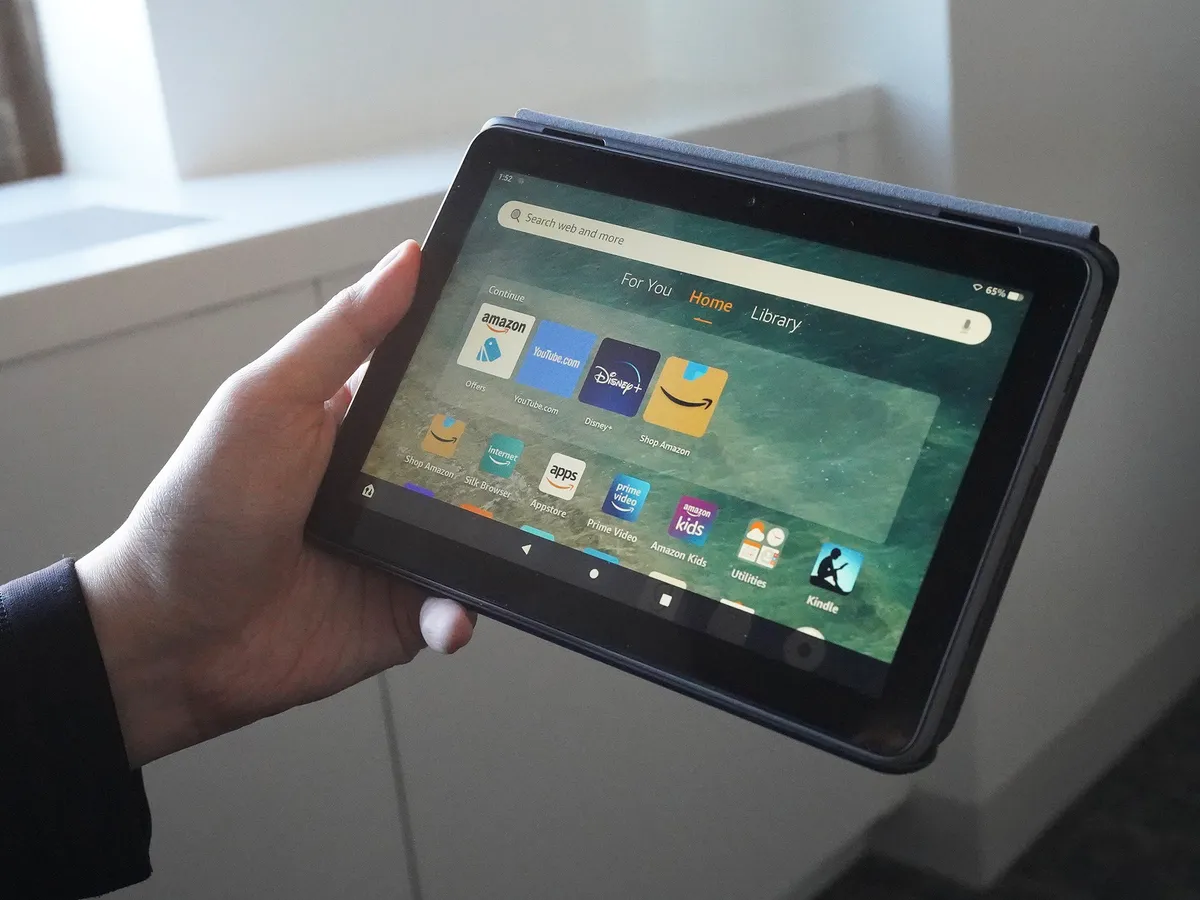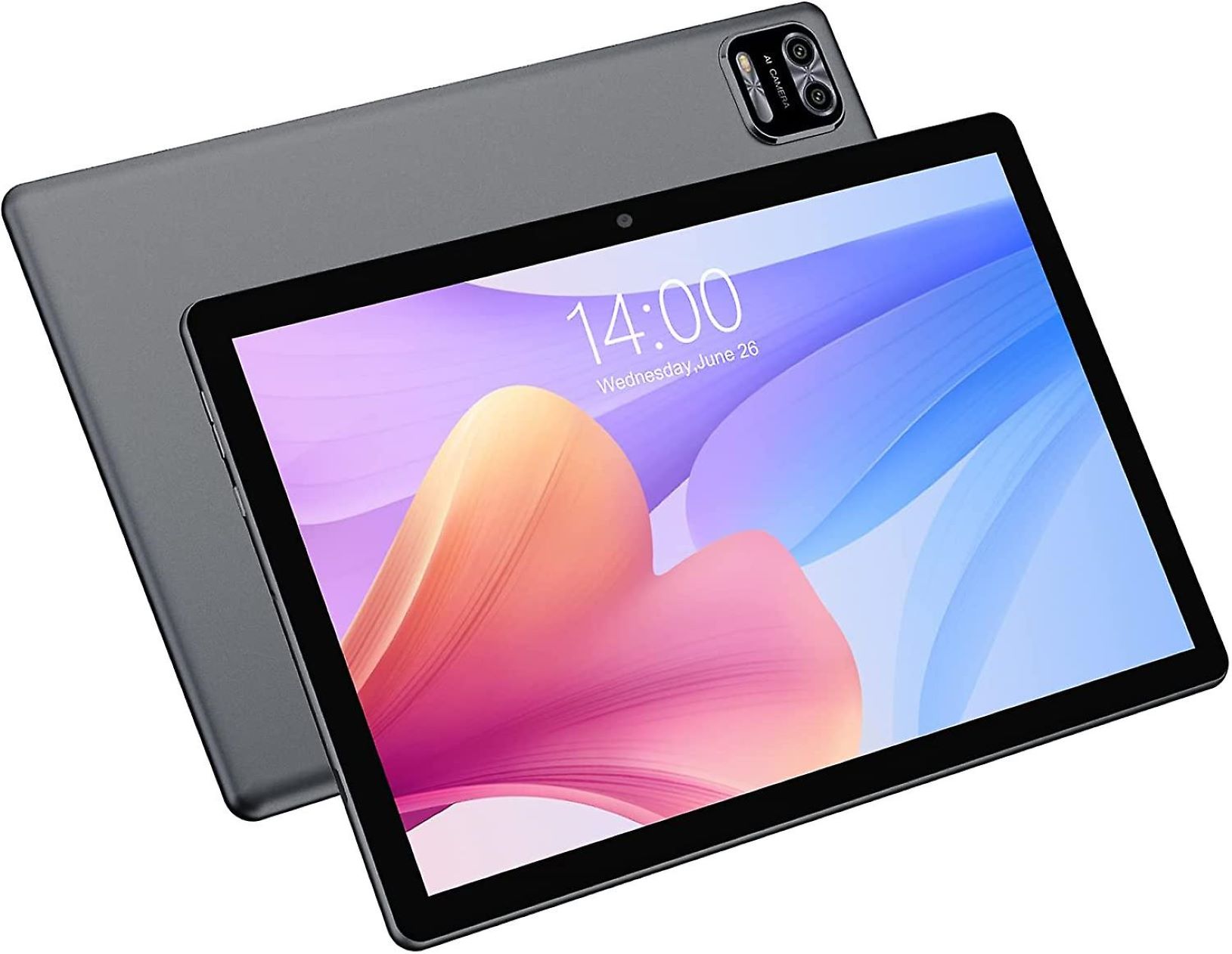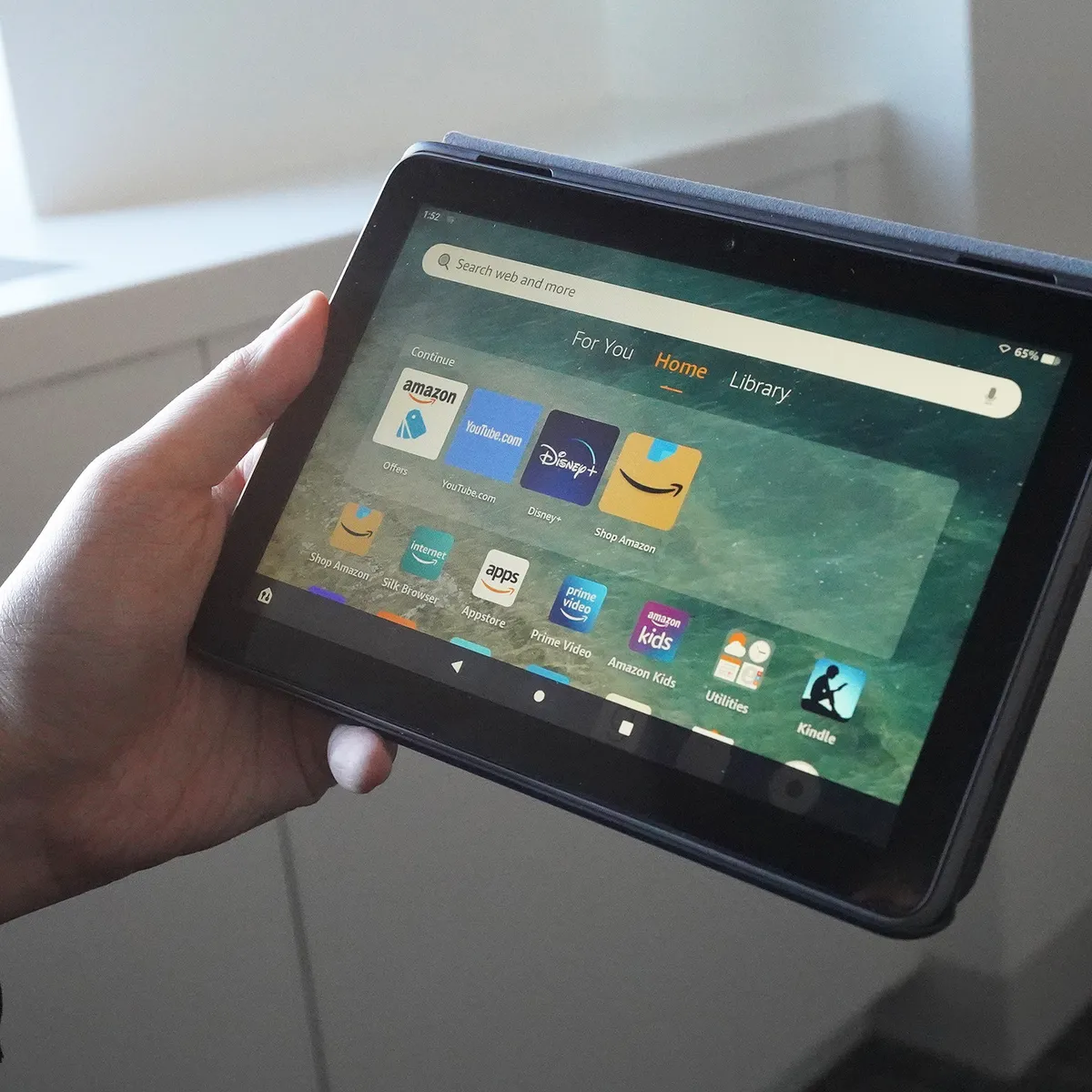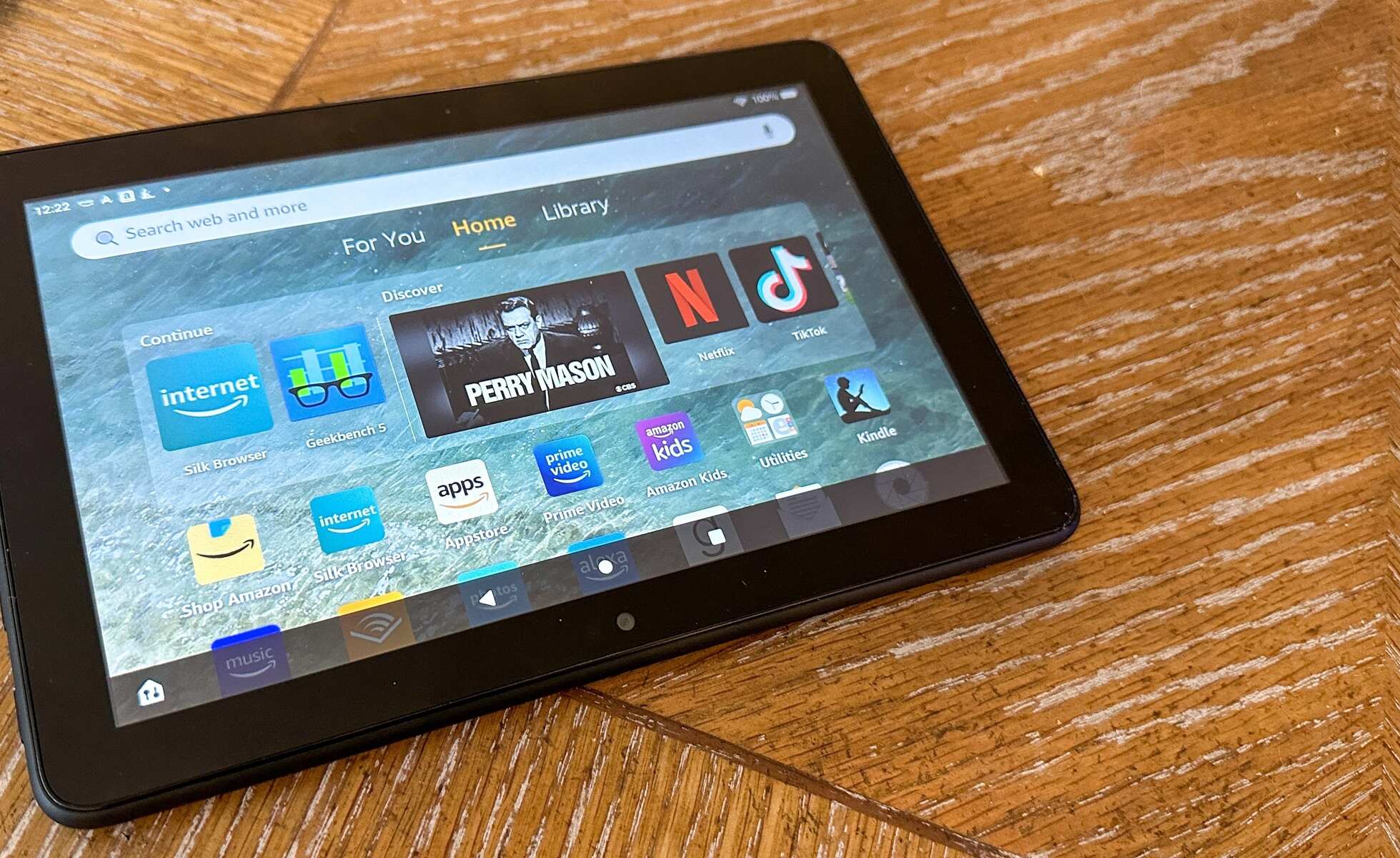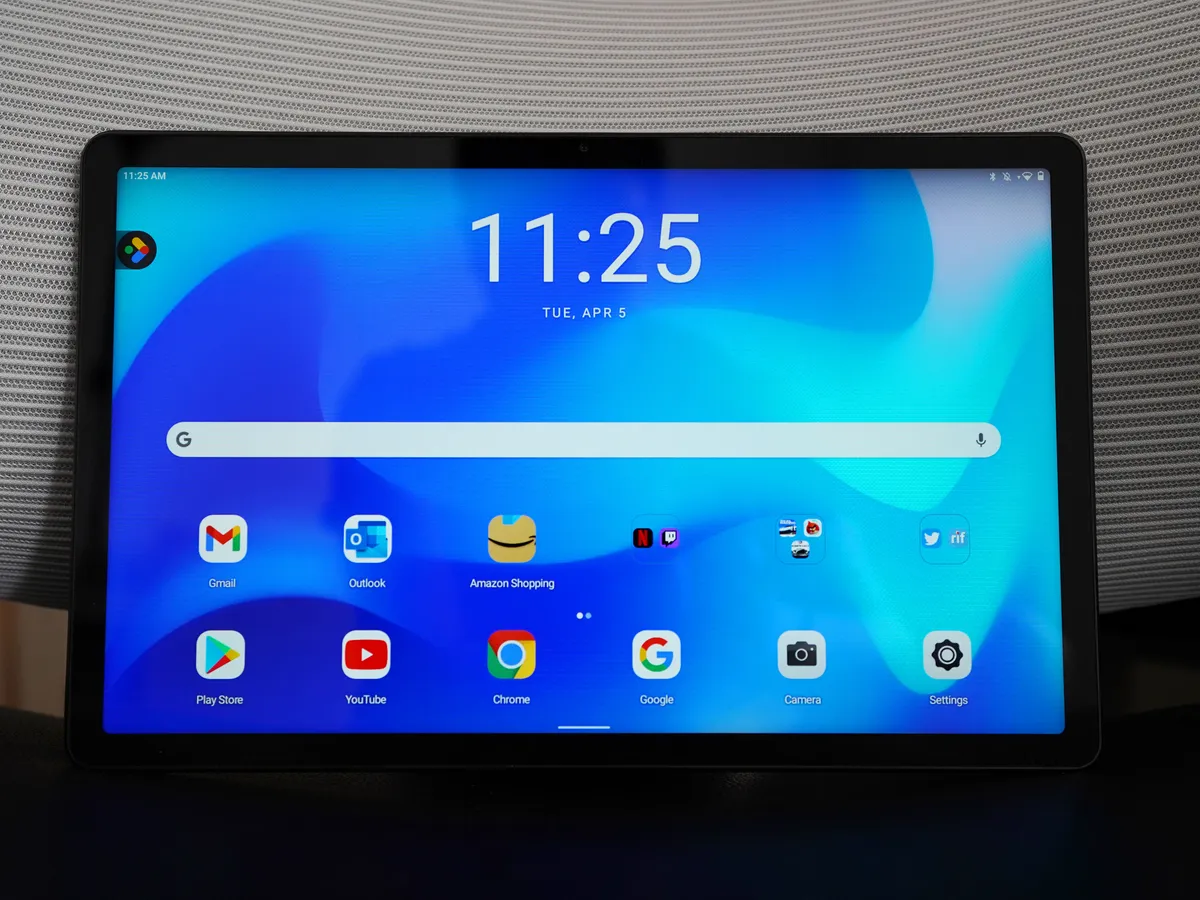Introduction
Welcome to the world of tablets! Whether you’re using a tablet for work, entertainment, or both, you want it to last as long as possible. But how long should a tablet last? It’s a common question among tablet owners, as the lifespan of these devices can vary depending on several factors.
A tablet is a versatile and portable device that combines the functionality of a smartphone and a computer. With their compact size and powerful features, tablets have become an essential tool for many people in their daily lives.
There is no definitive answer to how long a tablet should last, as it depends on various factors. These factors can include the battery life and performance, software updates and compatibility, hardware durability and build quality, usage patterns and care, among others. By understanding these aspects, you can make informed decisions on how to extend the lifespan of your tablet and know when it’s time for an upgrade.
In this article, we will explore these factors in detail and provide you with some helpful tips on how to prolong the life of your tablet. So, let’s dive in and discover how long you can expect your tablet to last.
Factors that Affect the Lifespan of a Tablet
Several key factors can significantly impact the lifespan of a tablet. Understanding these factors can help you make informed decisions when purchasing a tablet and taking care of it throughout its life. Let’s explore some of these crucial factors:
- Battery Life and Performance: The battery life of a tablet plays a vital role in its lifespan. Tablets with longer battery life can provide more convenience and usage time before needing a recharge. Additionally, the overall performance of the tablet, including speed, responsiveness, and multitasking capabilities, can impact its lifespan.
- Software Updates and Compatibility: Tablets that receive regular software updates tend to have a longer lifespan. Software updates not only enhance the performance and security of the device but also ensure compatibility with the latest applications and features. Obsolete software can cause compatibility issues and slow down the tablet’s performance.
- Hardware Durability and Build Quality: The durability of the tablet’s hardware components and build quality directly affect its lifespan. Tablets with rugged construction and high-quality materials are more likely to withstand daily wear and tear, accidental drops, and environmental factors. Opting for a tablet with a reputable brand known for its durable hardware can ensure a longer lifespan.
- Usage Patterns and Care: How you use and care for your tablet can significantly impact its lifespan. Regularly subjecting the tablet to demanding tasks, such as resource-intensive gaming or prolonged video streaming, can put a strain on the device and potentially shorten its lifespan. Proper care, such as using a protective case, cleaning the screen regularly, and avoiding extreme temperatures, can help prolong your tablet’s life.
By considering these factors, you can make informed decisions when choosing a tablet and implementing best practices to extend its lifespan. Remember, taking care of your tablet and keeping up with software updates are crucial for maximizing its longevity.
Battery Life and Performance
The battery life and performance of a tablet are crucial factors that directly impact its lifespan. Let’s delve into these aspects to understand their significance:
Battery Life: The battery life of a tablet refers to how long the battery can last on a single charge. Tablets with longer battery life allow for more extended usage before requiring recharging. Factors such as screen brightness, app usage, and connectivity options can affect the battery life. High-quality tablets usually have optimized power management systems to maximize battery efficiency.
Battery Performance: The performance of a tablet’s battery includes both its capacity and how well it maintains that capacity over time. In general, lithium-ion batteries, which are commonly found in tablets, tend to degrade over time. It means the battery’s capacity to hold a charge gradually decreases with each charging cycle. Factors like charging habits, temperature exposure, and usage patterns impact the speed of battery degradation.
While it’s challenging to predict the exact lifespan of a tablet’s battery, there are measures you can take to maximize its performance:
- Charge Scheduling: Avoid letting your tablet’s battery drain completely or keeping it constantly at 100% charge. It’s advisable to charge the tablet when the battery level falls between 20-80% for optimal performance.
- Avoid Extreme Temperatures: High temperatures can cause damage to the battery, reducing its lifespan. Avoid exposing your tablet to direct sunlight or extremely hot environments. Similarly, extremely cold temperatures can also affect battery performance, so try to keep it within the recommended temperature range.
- Limit Resource-Intensive Activities: Engaging in tasks that require high processing power, such as graphic-intensive gaming or running multiple apps simultaneously, can put a strain on the battery. Limiting such activities or using power-saving modes when possible can help preserve battery life.
- Keep Software Up to Date: Software updates often include optimizations and improvements to enhance battery performance. Ensure your tablet is running the latest software version to benefit from these updates.
By following these tips and adopting good battery management practices, you can extend the battery life and overall performance of your tablet, which in turn contributes to a longer lifespan for the device.
Software Updates and Compatibility
Software updates and compatibility play a significant role in determining the lifespan of a tablet. Let’s explore why these factors are crucial and how they can affect your tablet:
Software Updates: Regular software updates are essential for the longevity of your tablet. These updates often include bug fixes, security patches, and performance enhancements. By keeping your tablet’s software up to date, you ensure that it is running efficiently and securely. Software updates also bring new features and capabilities, allowing your tablet to stay relevant and functional for a longer period.
Compatibility: As newer versions of apps and operating systems are released, compatibility can become an issue for older tablets. When a tablet falls behind in terms of software updates, it may struggle to run the latest apps or perform optimally with the latest features. Over time, unsupported software versions can limit the functionality of your tablet and potentially render it obsolete.
To maximize the lifespan of your tablet in terms of software updates and compatibility, consider the following:
- Enable Automatic Updates: Most tablets offer the option to enable automatic updates. By doing so, you ensure that your tablet receives the latest software updates as soon as they become available, eliminating the need for manual intervention.
- Check System Requirements: Before downloading and installing apps or system updates, check the system requirements to ensure compatibility with your tablet. This helps avoid potential issues or performance degradation caused by running software that exceeds your tablet’s capabilities.
- Manufacturer Support: Research the manufacturer’s track record for providing software updates and support. Opt for tablets from reputable brands known for their commitment to regular updates and a longer software lifespan.
- Consider Custom ROMs: If your tablet is no longer supported with official updates, you may explore the option of installing custom ROMs (customized versions of the operating system) to extend its software compatibility. However, this requires technical expertise and caution as it can void warranties or cause unforeseen issues.
By staying proactive with software updates and considering compatibility when installing apps or system updates, you can maximize the lifespan of your tablet and ensure its continued functionality with the latest features and applications.
Hardware Durability and Build Quality
The durability and build quality of the hardware are essential factors that significantly impact the lifespan of a tablet. Let’s explore why these factors matter and how they can affect your tablet:
Hardware Durability: A tablet’s durability refers to its ability to withstand physical stress, such as accidental drops, bumps, and everyday wear and tear. Tablets with higher durability are built to withstand such incidents without suffering from significant damage. The materials used in the construction, such as reinforced plastics or metal alloys, can contribute to the overall durability of a tablet.
Build Quality: The build quality of a tablet encompasses the overall craftsmanship, precision of assembly, and attention to detail. Tablets with high build quality tend to have better structural integrity and an overall sturdier feel. Quality control during manufacturing ensures that the components fit together seamlessly, reducing the likelihood of malfunction or early failure.
When considering the hardware durability and build quality of a tablet, keep the following in mind:
- Manufacturer Reputation: Research the reputation of the tablet manufacturer regarding hardware durability and build quality. Look for brands known for their commitment to producing robust devices that can withstand daily use.
- Materials and Design: Check the materials used in the construction of the tablet and assess their durability. Metal or high-grade plastic casings tend to offer better protection against physical damage compared to lower-quality materials. Additionally, take note of the overall design and structural reinforcement to ensure a sturdy build.
- Rugged or Protective Cases: Consider using a rugged case or protective cover to add an extra layer of protection to your tablet. These accessories can provide shock absorption and protect the device from accidental drops or impacts.
- Proper Handling and Care: Practice proper handling techniques to minimize the risk of physical damage to your tablet. Avoid dropping it or subjecting it to unnecessary stress. Clean the screen regularly and avoid exposing the tablet to harsh environments or extreme temperatures.
By choosing a tablet from a reputable manufacturer with a focus on hardware durability and build quality, as well as taking proper care of the device, you can significantly extend its lifespan and ensure it remains functional throughout its intended usage period.
Usage Patterns and Care
How you use and care for your tablet can greatly impact its lifespan. Let’s explore the importance of usage patterns and care, and how they can affect the longevity of your device:
Usage Patterns: The way you use your tablet, including the tasks you perform and the frequency of use, can influence its lifespan. Certain activities, such as resource-intensive gaming, HD video streaming, or running multiple apps simultaneously, can put a strain on the tablet’s hardware, potentially shortening its lifespan. Additionally, constantly pushing the tablet to its performance limits may lead to overheating and battery drain.
Proper Care: Taking care of your tablet is essential to protect it from damage and ensure its optimal performance over time. Here are some care tips to consider:
- Use a Screen Protector: Applying a screen protector can safeguard the tablet’s display from scratches and smudges. It’s a simple and effective way to preserve the visual clarity and usability of the screen.
- Invest in a Protective Case: A good-quality protective case or cover can shield your tablet from accidental drops, impacts, and everyday wear and tear. Look for cases that provide proper cushioning and secure protection, without hindering access to essential ports and buttons.
- Keep it Clean: Regularly clean your tablet to remove dust, fingerprints, and other debris. Use a soft microfiber cloth and a gentle cleaning solution specifically formulated for electronic devices. Avoid using harsh chemicals or abrasive materials that can damage the tablet’s screen or casing.
- Avoid Extreme Temperatures: Extreme heat or cold can adversely affect the internal components of your tablet. Avoid exposing the device to direct sunlight, leaving it in a hot car, or subjecting it to freezing temperatures for extended periods.
- Manage Storage Space: Properly managing your tablet’s storage space is crucial for its performance and longevity. Avoid filling the device with unnecessary apps, files, or media that can clutter the storage and slow down the tablet. Regularly delete unused apps and files to free up space and maintain smooth operation.
- Power Off Occasionally: Giving your tablet a break by powering it off occasionally can help refresh its system and extend its lifespan. Restarting the device can clear temporary files, refresh software processes, and reduce any accumulated strain.
By adopting healthy usage patterns, such as avoiding excessive resource-intensive activities, and implementing proper care and maintenance practices, you can significantly prolong the lifespan of your tablet and ensure its continued performance and reliability.
Common Signs of a Tablet Reaching the End of its Life
After years of faithful service, tablets may gradually approach the end of their life cycle. While the exact lifespan of a tablet can vary, there are certain signs that indicate your device may be reaching its limit. Here are some common signs to look out for:
- Sluggish Performance: If your tablet becomes slow and unresponsive, struggling to execute even basic tasks, it could be a sign that its hardware and software are no longer compatible with the demands of newer applications and updates.
- Frequent Crashes and Freezes: If your tablet frequently crashes or freezes, requiring regular restarts or simply becoming unusable, it may be a sign that the internal components are deteriorating or struggling to keep up with the demands of modern software.
- Diminished Battery Life: As tablets age, their battery performance naturally degrades. If you find yourself needing to charge your tablet more frequently or if the battery drains rapidly despite minimal usage, it may indicate that the battery is nearing the end of its lifespan.
- Obsolete Operating System: As time passes, older tablet models may no longer receive software updates, leaving them vulnerable to security risks and incompatible with the latest apps and features. If your tablet’s operating system is no longer supported or compatible with the apps you need, it may be time to consider a replacement.
- Physical Wear and Tear: Excessive physical wear and tear, such as cracked screens, loose buttons, or malfunctioning ports, can significantly impact the usability and functionality of a tablet. If the physical condition of your tablet is deteriorating beyond repair, it may be a strong indicator that it has reached the end of its lifespan.
While these signs suggest that your tablet’s lifespan may be coming to an end, it’s important to note that not all tablets will exhibit the same signs at the same rate. Some tablets may last longer or shorter depending on the brand, model, usage patterns, and care. Evaluating the combination of these signs will help you make an informed decision about whether it’s time to replace your tablet.
Extending the Lifespan of Your Tablet
Your tablet’s lifespan can be extended with proper care and maintenance. Here are some tips to help maximize the longevity of your device:
- Keep Software Up to Date: Regularly update your tablet’s operating system and apps. Software updates often include performance improvements, bug fixes, and security patches that enhance the overall functionality and extend the lifespan of your tablet.
- Manage Storage and Clear Cache: Avoid filling up your tablet’s storage with unnecessary files and apps. Regularly delete unused apps and clear cached data to free up space and improve performance.
- Use Wi-Fi When Possible: Connect to Wi-Fi networks whenever available instead of relying on cellular data. Using Wi-Fi consumes less power, which helps conserve battery life and prolong the overall lifespan of your tablet’s battery.
- Apply System Optimization: Enable power-saving modes or battery optimization features offered by your tablet’s operating system. These settings can optimize the performance and battery life of your device.
- Handle with Care: Protect your tablet from physical damage by using a protective case or cover. Avoid dropping your tablet or subjecting it to impact or extreme temperatures.
- Clean Regularly: Keep your tablet clean by regularly wiping the screen with a microfiber cloth and using a gentle cleaning solution specifically designed for electronic devices. Keep ports and connectors free from dust and debris to maintain proper functionality.
- Avoid Overcharging: Overcharging can strain the battery and affect its longevity. Disconnect your tablet from the charger once it reaches a full charge, and avoid leaving it plugged in for extended periods.
- Secure Your Tablet: Install and regularly update security software to protect your tablet from viruses and malware. Avoid downloading apps or files from untrusted sources that may compromise the security and performance of your device.
- Backup Your Data: Regularly back up your important data, such as photos, videos, and documents. This ensures that even if something happens to your tablet, you won’t lose your valuable information.
By implementing these practices, you can optimize the performance, extend the lifespan, and make the most out of your tablet’s capabilities. Remember that taking care of your tablet is an ongoing process that requires attention and regular maintenance.
When is it Time to Replace Your Tablet?
While tablets can last for several years with proper care, there comes a time when it is necessary to replace them. Here are some indicators that suggest it may be time to consider a new tablet:
- Outdated Operating System: If your tablet is no longer receiving software updates or is running an outdated operating system that cannot support the latest apps and features, it may be time to upgrade. Without software updates, your tablet becomes more vulnerable to security risks and compatibility issues.
- Slow and Sluggish Performance: If your tablet consistently lags, freezes, or struggles to run even basic tasks, it could indicate that the device’s hardware is insufficient to meet the demands of modern apps and software. With advancements in technology, newer tablets offer faster processors, more RAM, and better overall performance.
- Physical Damage: Extensive physical damage, such as a shattered screen, malfunctioning buttons, or loose ports, can significantly impact the functionality and usability of your tablet. If repairs are not feasible or cost-effective, it may be more practical to invest in a new tablet.
- Diminished Battery Life: If your tablet’s battery no longer holds a charge for a reasonable amount of time or drains quickly with minimal usage, it can limit your mobility and productivity. Replacing the battery may be an option, but if other components are also deteriorating, a new tablet could provide a better overall experience.
- Limited Storage Space: If your tablet consistently runs out of storage space, despite your best efforts to manage it, it may be time to upgrade to a tablet with larger storage capacity. This allows you to store more files, install more apps, and improve overall performance.
- Changing Needs and Requirements: Over time, your needs and requirements for a tablet may change. If you find that your current tablet no longer meets your expectations or lacks the necessary features for your specific tasks, it may be worth considering an upgrade to a more advanced model.
Ultimately, the decision to replace your tablet depends on a combination of factors, such as the severity of its limitations, your budget, and personal preferences. Assessing the overall state of your tablet and considering these indicators can help you determine when it’s time to invest in a new device to meet your evolving needs.
Conclusion
In conclusion, the lifespan of a tablet can vary depending on various factors such as battery life, software updates, hardware durability, usage patterns, and care. While there is no fixed duration for how long a tablet should last, understanding these factors can help you make informed decisions to maximize its lifespan and performance.
By prioritizing battery life and performance, you can ensure that your tablet remains efficient and responsive. Regular software updates and compatibility with the latest apps and features are essential for a longer lifespan and optimal functionality. Additionally, choosing a tablet with durable hardware and high build quality can contribute to its longevity.
Managing your tablet’s usage patterns and practicing proper care are equally important. Avoiding resource-intensive activities, maintaining storage space, and handling your tablet with care can significantly impact its lifespan and prevent unnecessary damage.
Recognizing the common signs of a tablet nearing the end of its life, such as sluggish performance, frequent crashes, diminished battery life, or physical wear and tear, will help you make an informed decision about when it’s time to replace your tablet.
By applying these strategies and guidelines, you can extend the lifespan of your tablet and make the most out of your investment. Remember that regular maintenance, updates, and adapting to changing needs are essential for a long-lasting and enjoyable tablet experience.







